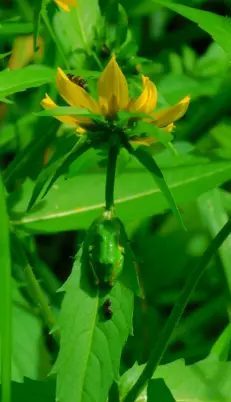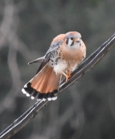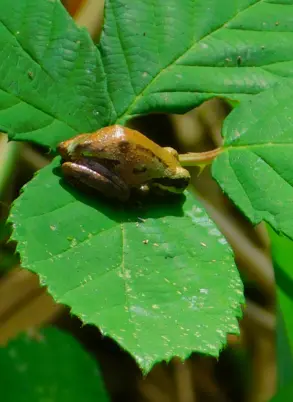A Keystone Speaker

by Marcia Wilson
Tiny, Beautiful, and Baffling
Tiny, beautiful, and baffling, the Pacific Tree Frog is a keystone species for Washington State, and a vocal “keynote speaker” for ecology.
At less than 2” or 5cm in length, the PFT is the smallest frog in Washington State and one of its most valuable. They produce more young than will survive because just about everything eats them. High in fat and protein, the frogs mean life and death for their predators in the same way mighty whales depend on tiny krill.
What’s in a Name? Psuedocris regilla translates to “splendid false locust” because they sound like insects. When Hollywood needed a proper atmosphere for outdoor films, sound artists recorded thousands of the PFT’s nocturnal calls and now they are the “default ribbit-ribbit” of anything moody or evocative on-screen. The whole world has heard the PFT but the majority has never seen it.

Most of the time, the frogs are right in front of our eyes. They are the source of heavy feeding among the waterfowl in the swamps, or the reason for the large population of dragonflies–yes, insects will eat them too! Puzzled visitors to the college wetlands report the oddity of the Great Blue Herons walking about in the tall cattails and grasses and ask, what are they fishing for? The answer is: frogs! On a warm, quiet day the herons can be seen plucking them up like a child with an endless supply of popcorn. Volunteers have even seen CPTC’s kestrel population merrily chowing down on a frog-leg supper.
Frogs vs. Toads: Skin in the Game
Even today, educators must correct old myths about frogs and toads. The PTF adds to many of these falsehoods:
- Myth 1: Frogs have smooth, shiny skin and toads have rough, dull skin.
- Fact: Frogs can have bumpy or lumpy skin, and the PFT is one of
them. They rarely “shine” unless wet.
- Fact: Frogs can have bumpy or lumpy skin, and the PFT is one of
- Myth 2: Toads are covered with warts and will give you warts if you touch
 them.
them.
- Fact: Handling frogs or toads is bad for everyone, but mostly for the amphibian. Their skin is delicate and full of sensory organs that keep it alive in a dangerous world. None of these animals have “warts” but they can have glands. The PFT’s skin glands secrete wax. This is an evolutionary mechanism allowing the frog to live away from water. Like a good coat of car wax, it keeps it from losing dangerous amounts of water in its drier home. This wax is not poisonous, but some people react to it with irritations or rashes. All frogs can host Salmonella, so “playing with frogs” is never a good idea.
- Myth 3: Frogs are green, Toads are brown.
- Fact: Frogs and Toads can be almost any hue, including purple and red. The PFT has a wide range including all possible shades of earth tones. Dr. Faust found an interesting “peacock green” PFT with a bluish cast in the watershed.
- Myth: Frogs live in the water, Toads live on the ground
- Fact: Frogs and toads can live in trees and out of water, even in deserts.
The Science of Changing Colors


Climate Controlling
If a PFT is green, it is absorbing the maximum amount of solar radiation. This is why their iconic green is in a shady backdrop or early in the morning. When the air is warm and dry they “dial down” and block the sun by turning brown or orange. The few times orange PFTs were found on the college lands, they were on hot, dry days where the vegetation was browning from the summer.
Is this camouflage? Yes. They cannot control this color shift like chameleons or octopuses, but it only takes a few minutes! Obviously for a small, vulnerable and tasty animal, every advantage helps. This and its ability to live out of water may be its best defense against predators.

A Keystone Species
A Keystone is the last piece of a building; it holds everything together and without it the structure will collapse. A keystone species is any plant, animal, or insect that would affect the health of the ecosystem by its absence. This often spells disaster. In 1989, Bangladesh had to freeze the export of frogs for three years because overharvesting had caused an explosion of insects. The PFT is hard to notice; this compels humans to take it for granted. Luckily, this attitude has shifted in recent times. In 2007 Washington State declared the Pacific Tree Frog its official state amphibian, thanks to the efforts of third-graders in Boston Harbor Elementary School. It is a good choice; the PFT thrives in every county in Washington, and wherever they live, they support the health of the world around them.
 them.
them.